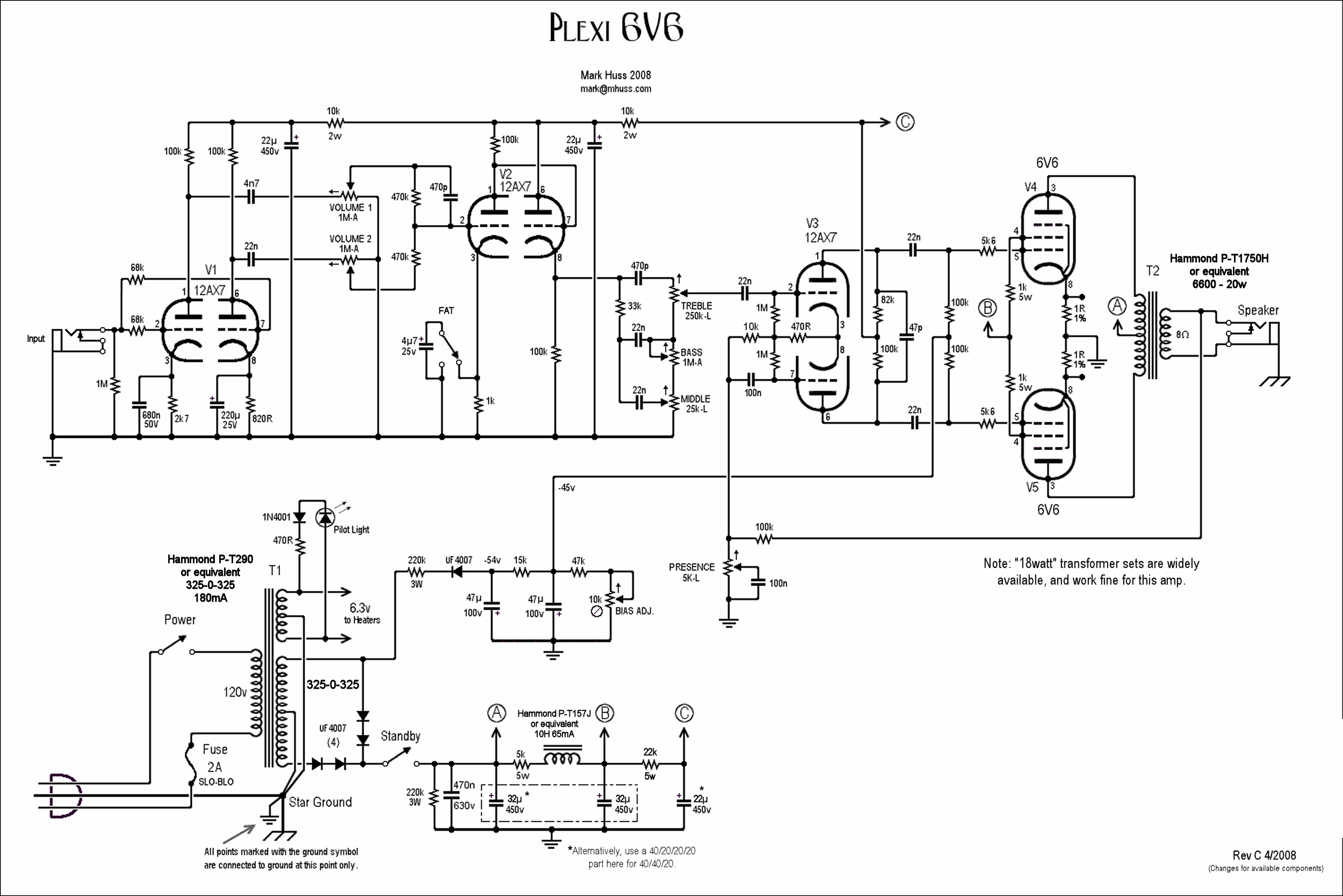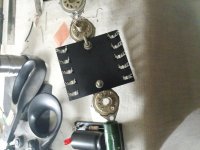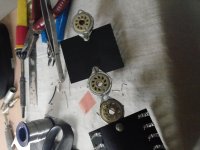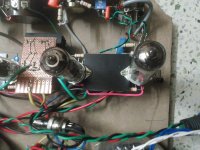Hi everyone,
I managed to pick up a burnt out Laney LC15, which Im planning on rebuilding to resemble something like the Plexi 6V6 by Mark Huss:

The Laney is originally a 3 x ECC83, 2 x EL84 amp, so I'll likely convert the schematic from 6V6 to EL84 using the values from the classic 18 watt amp.
Now, my question. The chassis has large holes to fit the 9 pin valves through, and the valve sockets are soldered directly to the PCB, like alot of less expensive modern amps. I was thinking on keeping to a similar construction,
Ive got a 3mm tuffnol board (phenolic laminate) that I could easily drill for turretboard. So, my question is, can and should I punch / drill 22mm holes in the tuffnol board to mount the valve sockets directly? This would mean I could solder the entire circuit together on the turretboard, only going off board for the sockets and pots, which would be a big advantage in construction - the chassis is a bit pokey. Ive seen this done with preamp valves but never with power valves.
Has anyone ever tried this with power valves? It shold work just fine, but as always its a good idea to bounce the idea off those with more experience.
Cheers!
Mikey
I managed to pick up a burnt out Laney LC15, which Im planning on rebuilding to resemble something like the Plexi 6V6 by Mark Huss:

The Laney is originally a 3 x ECC83, 2 x EL84 amp, so I'll likely convert the schematic from 6V6 to EL84 using the values from the classic 18 watt amp.
Now, my question. The chassis has large holes to fit the 9 pin valves through, and the valve sockets are soldered directly to the PCB, like alot of less expensive modern amps. I was thinking on keeping to a similar construction,
Ive got a 3mm tuffnol board (phenolic laminate) that I could easily drill for turretboard. So, my question is, can and should I punch / drill 22mm holes in the tuffnol board to mount the valve sockets directly? This would mean I could solder the entire circuit together on the turretboard, only going off board for the sockets and pots, which would be a big advantage in construction - the chassis is a bit pokey. Ive seen this done with preamp valves but never with power valves.
Has anyone ever tried this with power valves? It shold work just fine, but as always its a good idea to bounce the idea off those with more experience.
Cheers!
Mikey
Last edited:
This isn;t quite what you are looking for, but I like these things for small 12AX7 circuits, but they make them in octal as well. Maybe it will give you some ideas. WOuld be no problem to switch the sockets to the other side of the board, for example.
Terminal Board - 2 x 8 Pin Socket | Antique Electronic Supply
and single octal:
Terminal Board - 1 x 8 Pin Socket | Antique Electronic Supply
2x 9-pin
Terminal Board - 2 x 9 Pin Socket | Antique Electronic Supply
alternate
Terminal Board - 2 x 9 Pin Socket, for Dynaco Mark III | Antique Electronic Supply
Terminal Board - 2 x 8 Pin Socket | Antique Electronic Supply
An externally hosted image should be here but it was not working when we last tested it.
and single octal:
Terminal Board - 1 x 8 Pin Socket | Antique Electronic Supply
2x 9-pin
Terminal Board - 2 x 9 Pin Socket | Antique Electronic Supply
alternate
Terminal Board - 2 x 9 Pin Socket, for Dynaco Mark III | Antique Electronic Supply
Another source, whom I've used: Products
Cheers SY, sliding gently off topic - Im sure I read, maybe in Merlins book, that the ground plane idea isnt so good for audio frequency due to eddie currents and whatnot, and a ground bus is superior. If that is the case, then those copper planes on those tagboards wouldnt be optimal.
Is this correct, or am I overthinking it?
Cheers SY, sliding gently off topic - Im sure I read, maybe in Merlins book, that the ground plane idea isnt so good for audio frequency due to eddie currents and whatnot, and a ground bus is superior. If that is the case, then those copper planes on those tagboards wouldnt be optimal.
Is this correct, or am I overthinking it?
You're over thinking it - this is also a valve instrument amp, so the entire point is to achieve low quality.
You're over thinking it - this is also a valve instrument amp, so the entire point is to achieve low quality.
Thats easily done, Ive been achieving low quality for years 😉
- Status
- Not open for further replies.
- Home
- Live Sound
- Instruments and Amps
- Mounting valve / tube sockets directly to turretboard


